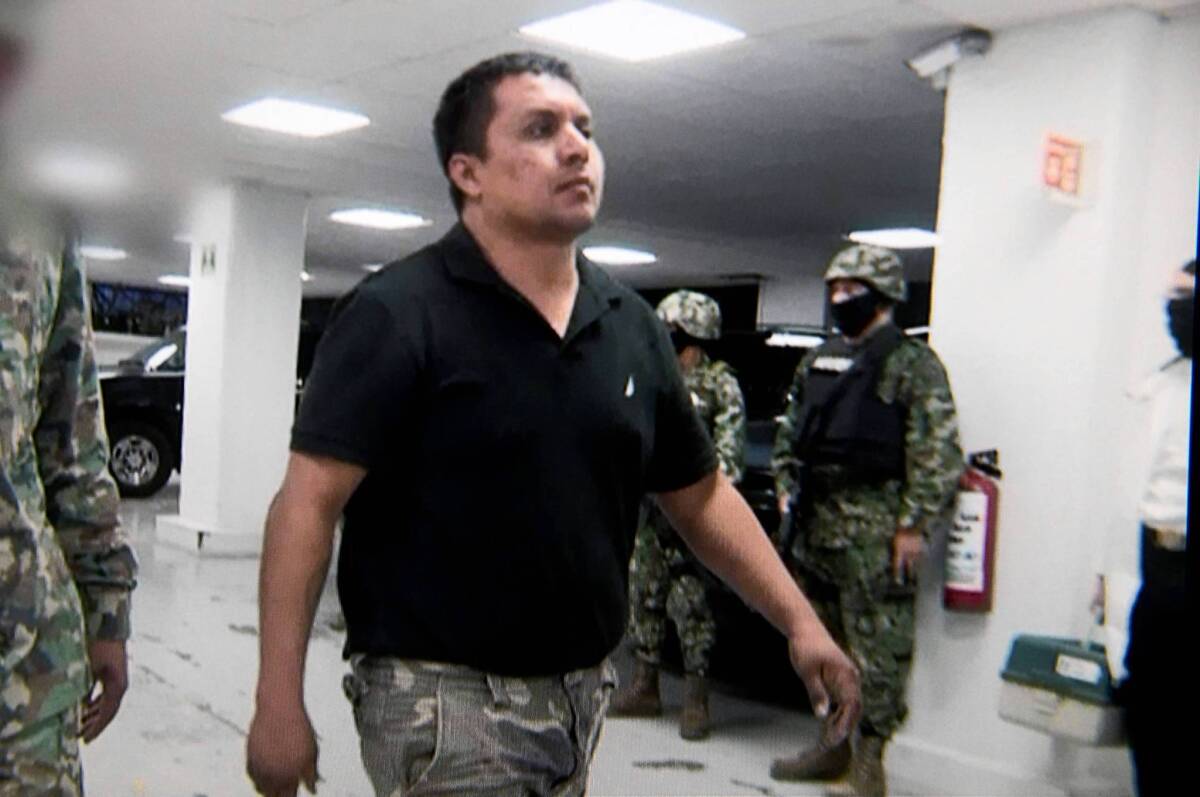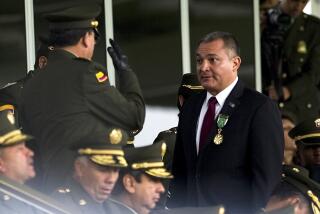Mexico cartel leader’s capture will have little effect on drug flow

MEXICO CITY — The capture of the top leader of Mexico’s most bloodthirsty and bloodcurdling drug cartel will have surprisingly little effect on trafficking of cocaine and other illicit substances to the U.S., and on the violence that has claimed tens of thousands of lives here in recent years.
If anything, the violence, at least in the short term, may surge as rivals and potential successors of Miguel Angel Treviño Morales, alias Z-40, head of the Zetas paramilitary gang, battle to take his place or his turf.
But for President Enrique Peña Nieto, the capture is a small coup. The 7-month-old government, marking its first major strike against organized crime, probably hopes the early-Monday arrest near the border town of Nuevo Laredo will score points in the theater of public opinion and especially among skeptics who doubt the new leader’s vague and sporadic security policy.
FULL COVERAGE: Mexico’s drug war
The elimination of Treviño “will seriously complicate … the ability of these groups … to exercise their criminal activities,” the government’s security affairs spokesman, Eduardo Sanchez, said Tuesday in a television interview. His remarks reflected Peña Nieto’s insistence on downplaying the drug war.
In marked contrast to his predecessor, President Felipe Calderon, whose military-led, U.S.-backed war on powerful cartels claimed more than 70,000 lives in six years, decapitated many organizations, but ultimately did not make a significant dent in trafficking, Peña Nieto has told U.S. advisors to stand down and, to his public, has instead emphasized a more mundane fight against killings, kidnapping and extortion.
Peña Nieto, speaking at an event in San Luis Potosi, took the unusual step of thanking state authorities along with the navy. In most states, certainly in Tamaulipas, where Treviño was captured, local authorities are so corrupt that federal drug interdictions take place without their knowledge.
“Yesterday, thanks to the good coordination that exists between the government of the republic and state government agencies charged with security,” he said, “the apprehension of one of the most wanted criminals in our country was made possible.”
Analysts said the important capture would be used by the government as proof of its commitment to the drug war and possibly to distract from much vaunted reform programs that are not going so well.
Areas of cartel influence in Mexico
Source: Stratfor
Los Angeles Times
“It does not sit badly at all that the capture comes when around the world doubts are surfacing about [Peña Nieto’s] reform agenda,” the hallmark of his administration, Carlos Puig, a journalist and political analyst, wrote in a column Tuesday in Mileno newspaper.
“No capture of an individual will have great impact on drug trafficking nor perhaps, sadly, the violence. But the value of Z-40 is something else and enormous: It gives breathing room” to a government that has yet to articulate its strategy, Puig said.
Officially, Washington congratulated the Mexican government, and notably the well-regarded navy special forces who caught Treviño as he moved before dawn with two lieutenants in a pickup with a load of guns and $2 million in cash.
“His ruthless leadership has now come to an end,” the U.S. Drug Enforcement Administration said in a statement.
Other American officials, not accustomed in recent years to being shut out of Mexican planning, were more circumspect.
“This is good,” a senior official said of the arrest. “But if this is all they are doing, it’s not enough.”
The Zetas have proved themselves quite resilient, with a long string of heirs ever ready to take the place of a fallen leader. Experts say they are like a worm, where authorities can cut off pieces, but the worm lives on.
However, the Zetas, who dominate most of the eastern coast of Mexico and have operations in at least eight states plus the U.S. and Central America, are increasingly exposed as more of a series of franchises than a coherent, hierarchical organization. That can be both good and bad news.
A lack of strict command and control means members of an already vicious group can become more evilly ferocious at a local level, where citizens and migrants are at their unmitigated mercy.
But a loose network of franchises could also lead to less violence overall, since each group must focus on criminal adventures in its own territory. In that dynamic, the demise of Z-40 may not have great impact.
“It is reminiscent of what happened with the Cali and Medellin cartels in Colombia,” said George Grayson, a Mexico expert at the College of William and Mary who has written a book about the Zetas. “Namely, they fragment into cartelitos, [small cartels] which, while dangerous, do not pose a threat to state security.”
Another consequence is the boost that weakening the Zetas leadership gives to the Sinaloa cartel, still Mexico’s biggest and most powerful. The capture of Treviño undoubtedly strengthens the hand of Sinaloa leader Joaquin “Chapo” Guzman, the fugitive billionaire kingpin who has been in bloody competition with the Zetas for ever-widening swaths of territory. Guzman, after several failed attempts over the years, may now have his eyes on Nuevo Laredo, Treviño’s hometown and one of the most lucrative crossing points for the shipment of tons of cocaine and marijuana into the U.S.
“Chapo Guzman has been rid of one of his most dangerous enemies standing in his way,” said Ricardo Ravelo, a cartel expert and author of several books.
Treviño, known for his brutality and his affinity for being filmed as he tortured and dismembered victims, was one of the last of the old guard of the Zetas still standing, after the arrest or killing of numerous leaders and top lieutenants.
The Zetas were formed nearly a decade ago by leaders of the Gulf cartel as their muscle, recruited from a group of deserters from the Mexican army. But the Zetas eventually split from the cartel and surpassed it, spreading its operations through southern Mexico and Central America and exhibiting levels of brutality not previously seen with such regularity. Beheadings, massacres of migrants, torture and dismembering of live victims all became routine parts of the Zetas repertoire.
Treviño was considered one of the most brutal leaders of a particularly brutal organization, one that branched out from drug trafficking to extortion, kidnapping and the smuggling of migrants, who Treviño and his men routinely slaughtered when they did not cooperate or pay up, authorities say.
Cecilia Sanchez of The Times’ Mexico City bureau contributed to this report.
ALSO:
FULL COVERAGE: Mexico’s drug war
Mexico City mayor under fire over disappearances of 12
Seized cartel leader is wanted in 260 slayings, Mexico says
More to Read
Sign up for Essential California
The most important California stories and recommendations in your inbox every morning.
You may occasionally receive promotional content from the Los Angeles Times.











